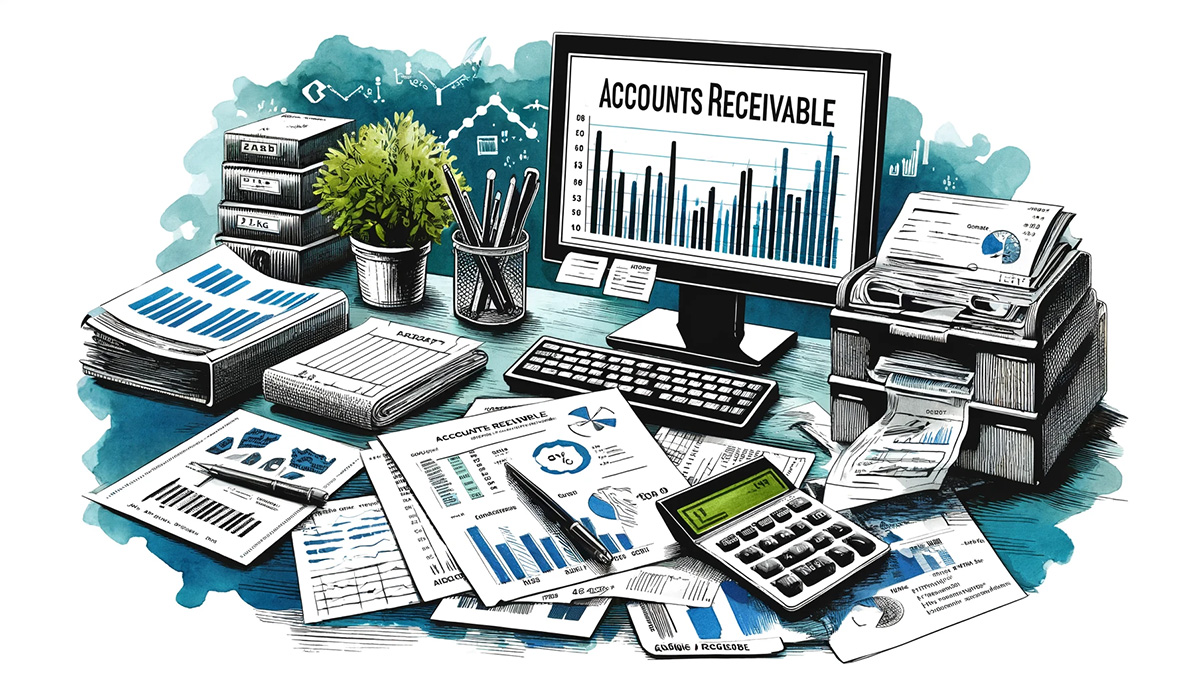Account Receivable is what amount of money owed to a company for goods or services that are delivered but not yet paid for.
What Is Account Receivable In Accounting?
In accounting, accounts receivable is what a company tracks to know how much it is owed. It is recorded on the balance sheet as an asset. When a sale is made on credit, an entry is made to increase (debit) accounts receivable and to increase (credit) sales revenue. When payment is received, cash is increased (debited), and accounts receivable is decreased (credited), reflecting the receipt of money.
Effective management of accounts receivable is vital for maintaining healthy cash flow. Quick conversion of receivables into cash ensures that a business has sufficient funds to meet its operational expenses and invest in growth opportunities. Poor management, on the other hand, can lead to cash flow problems, affecting the overall financial stability of the company.
Similar Accounting Terms
This section assists readers in expanding their accounting vocabulary and understanding how an account receivable connects to other essential financial concepts, enhancing their overall comprehension of business accounting.
Trade Receivables
This term refers specifically to amounts owed by customers as a result of selling goods or services on credit. It is a common form of accounts receivable in business-to-business transactions.
Receivables
A broader term encompassing all types of amounts owed to a business, including trade receivables and other types of dues such as interest receivable, rent receivable, etc.
Outstanding Invoices
This refers to invoices that have been issued to customers for goods or services but have not yet been paid. It is a practical representation of accounts receivable in everyday business operations.
Debtor Balances
This term highlights the balance amount that debtors owe to a company. It underscores the credit aspect of accounts receivable, focusing on the individual or entity that owes the company money.
Common Misconceptions
Accounts Payable
Unlike accounts receivable, which refers to money owed to the company by customers, accounts payable involves money the company owes to its suppliers. It is a liability on the balance sheet, as it represents future outflows of cash to settle debts for goods or services received.
Accounts Receivable vs. Accounts Payable
Accounts receivable is an asset because it represents money that will come into the company, whereas accounts payable is a liability because it signifies money that the company must pay out.
Impact on Cash Flow
Effective management of accounts receivable increases cash flow by bringing money into the business, while accounts payable management involves scheduling cash outflows to meet obligations without straining financial resources.
Financial Statement Placement
Accounts receivable appears on the balance sheet under current assets, and accounts payable under current liabilities.
Relationship
Accounts receivable usually involves relationships with customers (debtors), and accounts payable with suppliers (creditors).
Use Cases
Small Business Operations
Description of a typical scenario involving accounts receivable in a small business:
- A small boutique sells clothing on credit to a local retailer. The boutique records this transaction as accounts receivable, indicating an expectation of payment within 30 days.
Impact of efficient accounts receivable management on business liquidity:
- By actively managing its accounts receivable, the boutique ensures timely collection of payments, which enhances its cash flow. This allows the business to reinvest in inventory, cover operational costs, and maintain financial stability.
Large Corporation Context
How accounts receivable is managed differently in larger corporate settings:
- Large corporations often have dedicated departments for managing receivables, utilizing automated systems for tracking invoices and customer payments. They may also use credit scoring to assess the creditworthiness of customers before extending credit.
The role of accounts receivable in financial reporting and audits:
- In large corporations, accounts receivable plays a significant role in financial reporting, affecting the company’s reported earnings and assets. Regular audits are conducted to ensure the accuracy of the receivables recorded, which influences investors’ and creditors’ perceptions.
International Transactions
Challenges and considerations for managing accounts receivable across borders:
- Managing international accounts receivable involves dealing with currency exchange risks, differing credit practices, and legal environments across countries. This complexity requires sophisticated risk management strategies.
Example of a multinational company handling foreign accounts receivable:
- A multinational corporation sells machinery to clients in several countries and manages accounts receivable in different currencies. It uses hedging techniques to mitigate exchange rate risks and employs local teams to comply with regional legal requirements.





Ask A Question